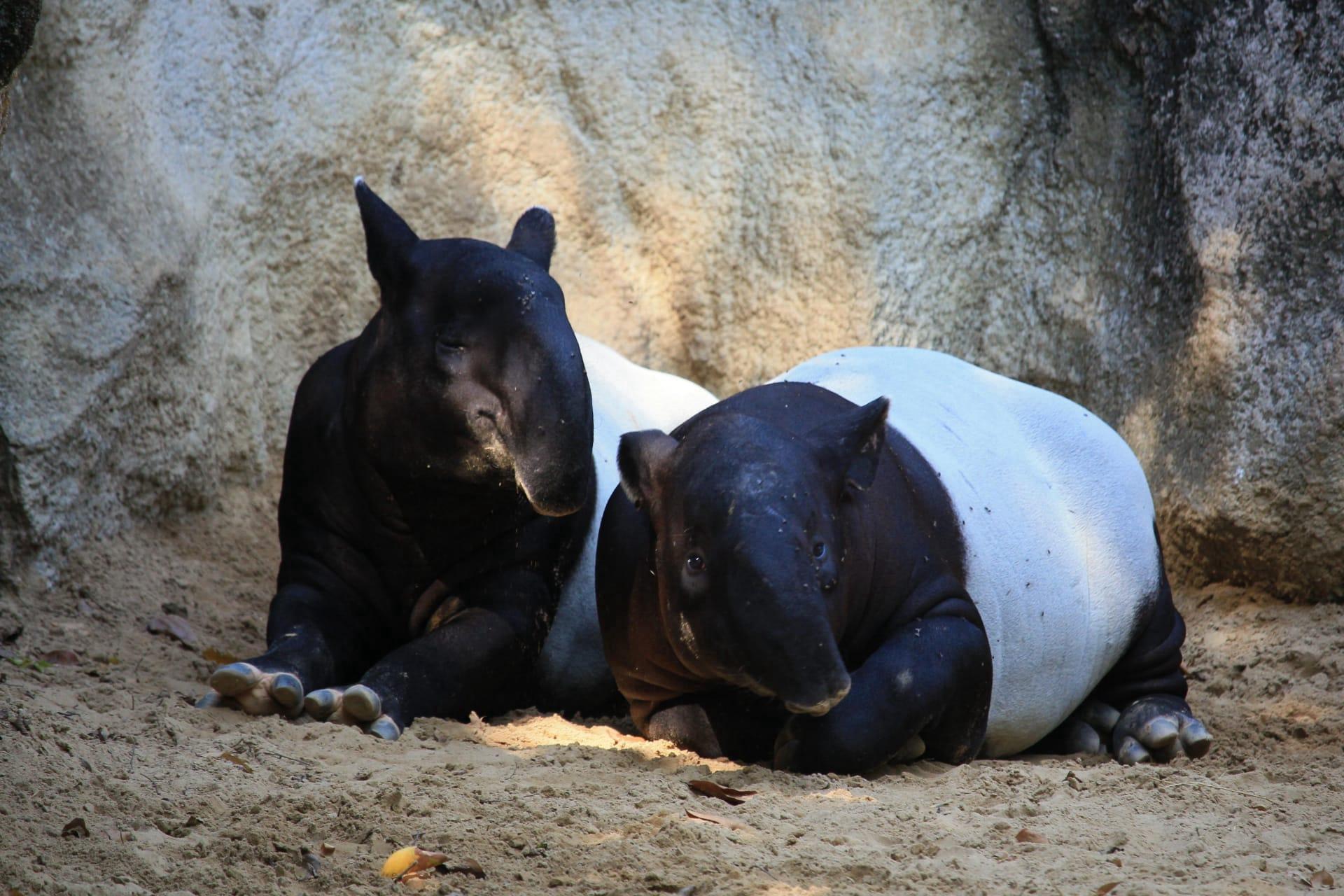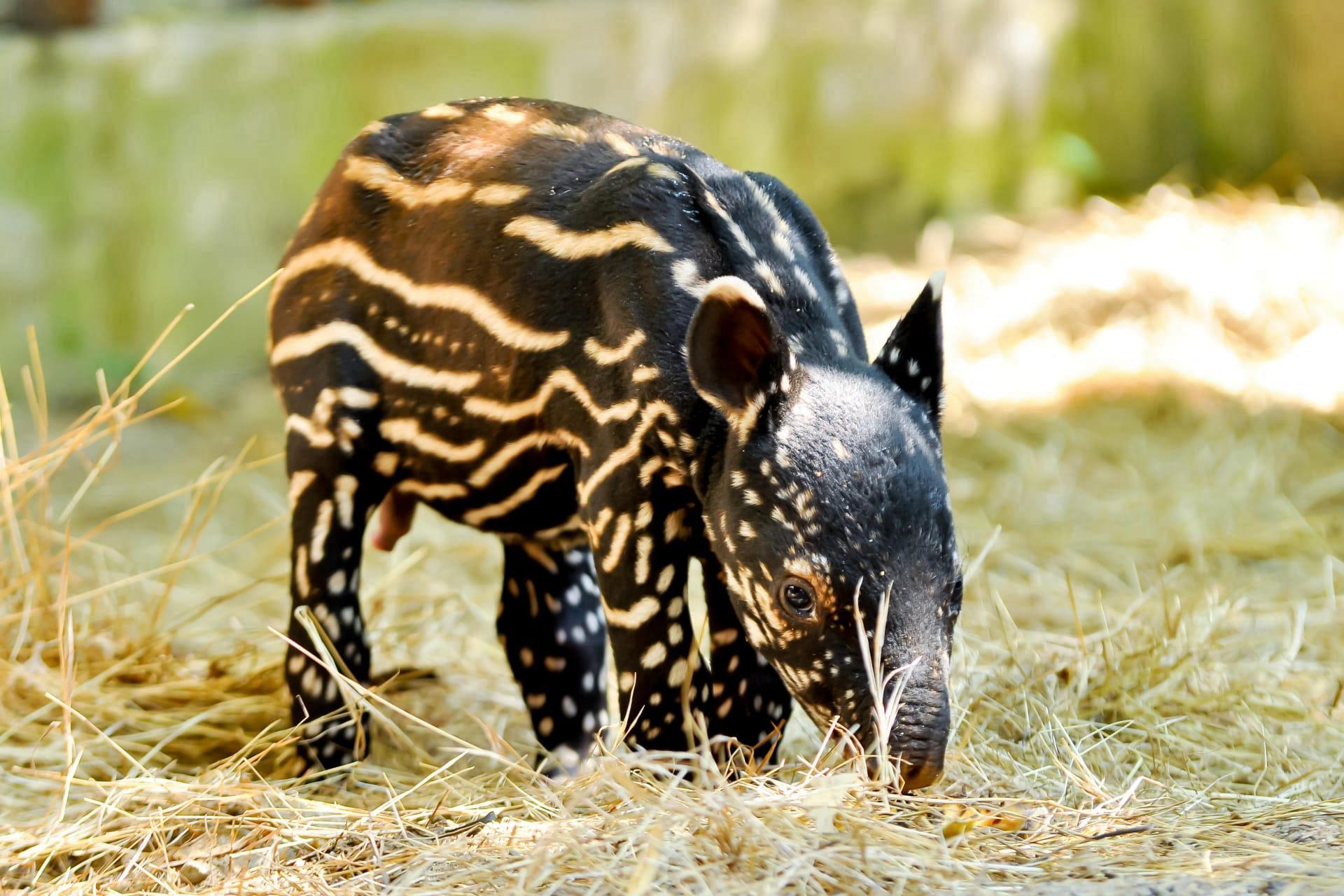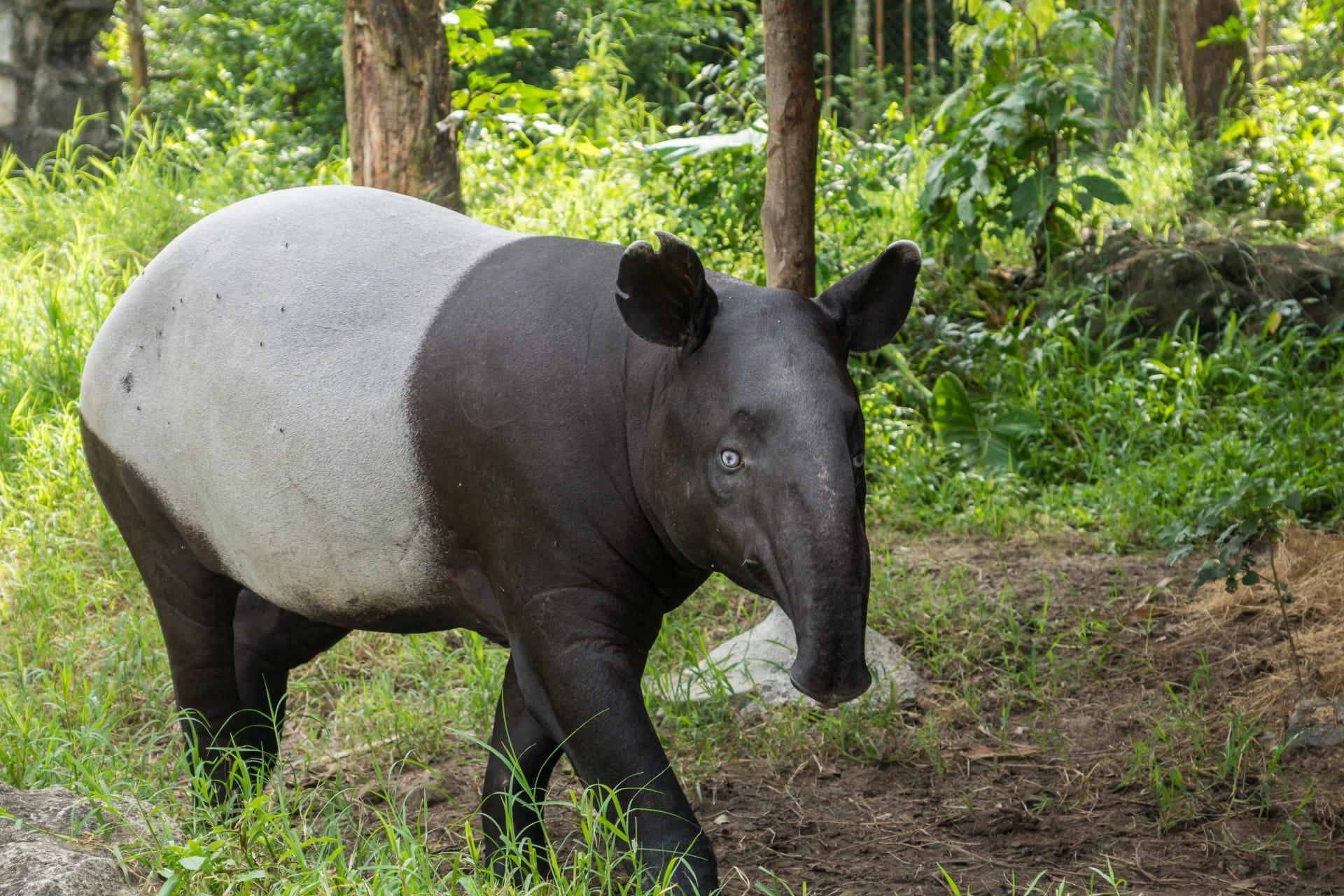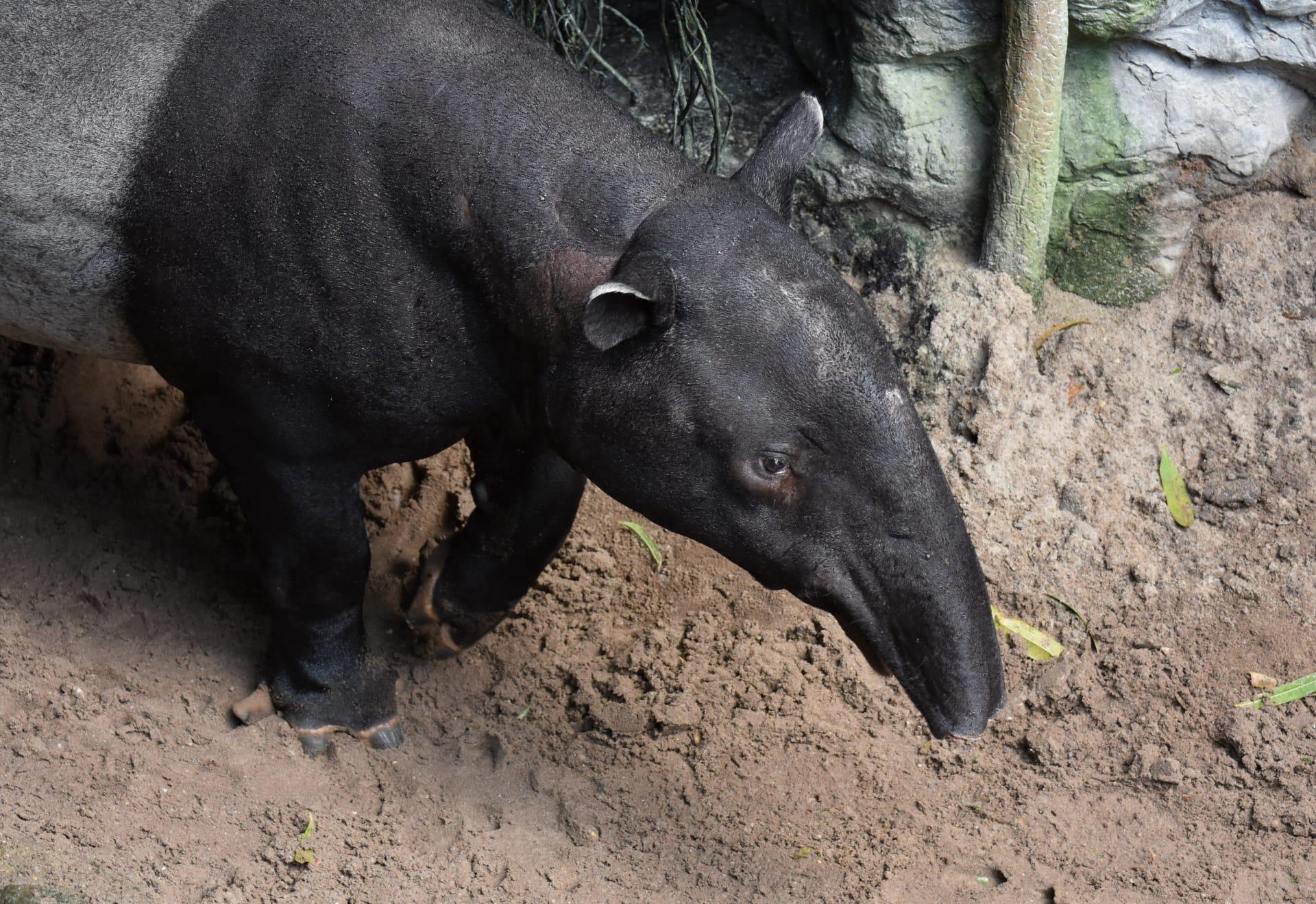Tapir
- Home /
- Mini Encyclopedia /
- Animal /
- Tapir
1
The Tapir, scientifically classified under the family Tapiridae, represents an intriguing group of large, herbivorous mammals. There are four recognized species of tapirs: the Brazilian Tapir, the Malayan Tapir, Baird's Tapir, and the Mountain Tapir. These species are distinct in their geographic locations and physical characteristics. The Brazilian Tapir, found in South America, has a smaller stature and dark brown fur. In contrast, the Malayan Tapir, native to Asia, is the largest species, identifiable by its unique black and white coloration. Baird's Tapir, the national animal of Belize, inhabits Central America and parts of South America, while the Mountain Tapir resides in the Andes of South America.
Tapirs have a widespread but fragmented distribution across the globe. The Brazilian Tapir inhabits the rainforests of South America, spanning Brazil, Venezuela, Colombia, and Paraguay. The Malayan Tapir's habitat extends across the rainforests of Southeast Asia, specifically in Malaysia, Thailand, and Indonesia. Baird's Tapir, predominantly found in Central America, also stretches its range to Colombia and Ecuador in South America. The Mountain Tapir, the smallest and most endangered species, is confined to the high-altitude regions of the Andes in Colombia, Ecuador, and northern Peru. This distribution reflects the tapir's adaptability to diverse ecosystems, from tropical rainforests to mountainous regions.

2
Question: Are tapirs related to pigs and rhinoceroses due to their similar appearance?
Answer: Despite their physical resemblance to pigs and rhinoceroses, tapirs are not closely related to these animals. This misconception arises from their stout bodies and prominent snouts. However, tapirs are actually part of the order Perissodactyla, which includes horses and rhinoceroses. This classification is based on their odd-toed ungulate structure, having an uneven number of toes on their rear feet. Genetic studies have shown that tapirs share a more distant relation to rhinoceroses and are even further removed from pigs, which belong to the entirely different order of Artiodactyla.

3
Tapirs exhibit fascinating survival strategies to thrive in their environments. One key aspect is their nocturnal lifestyle, which helps them avoid predators and extreme daytime temperatures. They are also excellent swimmers, using water bodies not only for escape but also for foraging and cooling off. Tapirs have a varied diet, feeding on leaves, fruits, and twigs, which they deftly handle with their prehensile snouts. This dietary flexibility allows them to adapt to different food availabilities across seasons. Furthermore, their solitary nature and secretive behavior make them less visible to predators. Tapirs also have a keen sense of smell and hearing, compensating for their relatively poor eyesight, which aids them in detecting danger and finding food in the dense forest undergrowth.
Reproduction is another crucial survival strategy for tapirs. They have a lengthy gestation period of about 13 months, after which a single calf is usually born. These calves have striped and spotted coats for camouflage, providing them an adaptive advantage in the wild. This coat pattern fades as they mature, usually within a year. The extended parental care, lasting up to 18 months, ensures that the young tapirs learn essential survival skills, such as foraging and predator avoidance, crucial for their long-term survival.

4
In the ecosystem, tapirs play a vital role in maintaining the health and balance of their habitats. As mega-herbivores, their feeding habits significantly influence the vegetation structure. By consuming a wide variety of plants, they aid in controlling overgrowth and promoting plant diversity. This feeding behavior is crucial in shaping the forest dynamics, as it affects the distribution and abundance of various plant species.
Furthermore, tapirs are essential seed dispersers. Through their feces, they distribute the seeds of the fruits they consume, aiding in plant regeneration and forest rejuvenation. This role is particularly critical in maintaining the biodiversity of tropical forests, where tapirs are often the primary seed dispersers for several plant species. Their disappearance could lead to significant changes in forest composition, underlining their importance in ecological processes. The conservation of tapirs, therefore, is not only about preserving a unique species but also about sustaining the ecosystems they inhabit.

5
Film: "Walking with Giants: The Grizzlies of Siberia" is a fascinating documentary from the United States, released in the late 1990s. This documentary, while primarily focused on grizzly bears in Siberia, offers remarkable insights into the ecosystem that is also home to the Malayan Tapir. The film provides a comprehensive view of the challenges and beauty of life in this remote wilderness, including brief appearances and mentions of the elusive Malayan Tapir.
Book: "The Forgotten Animals of Asia: The Last Hope for Wildlife Conservation," published in the United States in 2010, is an enlightening read. Authored by Dr. Samuel Martin, this book delves into the plight of various Asian wildlife species, including a detailed chapter on the Malayan Tapir. It explores their habitat, behavior, and the conservation challenges they face, providing a comprehensive overview of this often-overlooked species.
Book: "Jungle Shadows: A Journey Through the World’s Rainforests," released in 2015 in the UK, is written by renowned naturalist Emma Thompson. The book offers an engaging exploration of rainforest ecosystems around the world, dedicating a significant portion to the Brazilian Tapir. Thompson's vivid descriptions of her encounters with these creatures in the Amazon Rainforest bring to life the challenges and wonders of their existence.